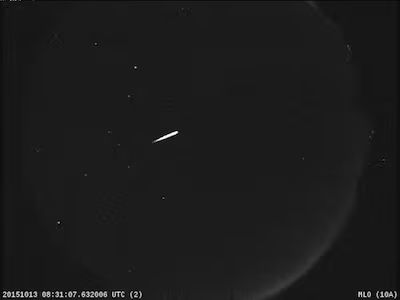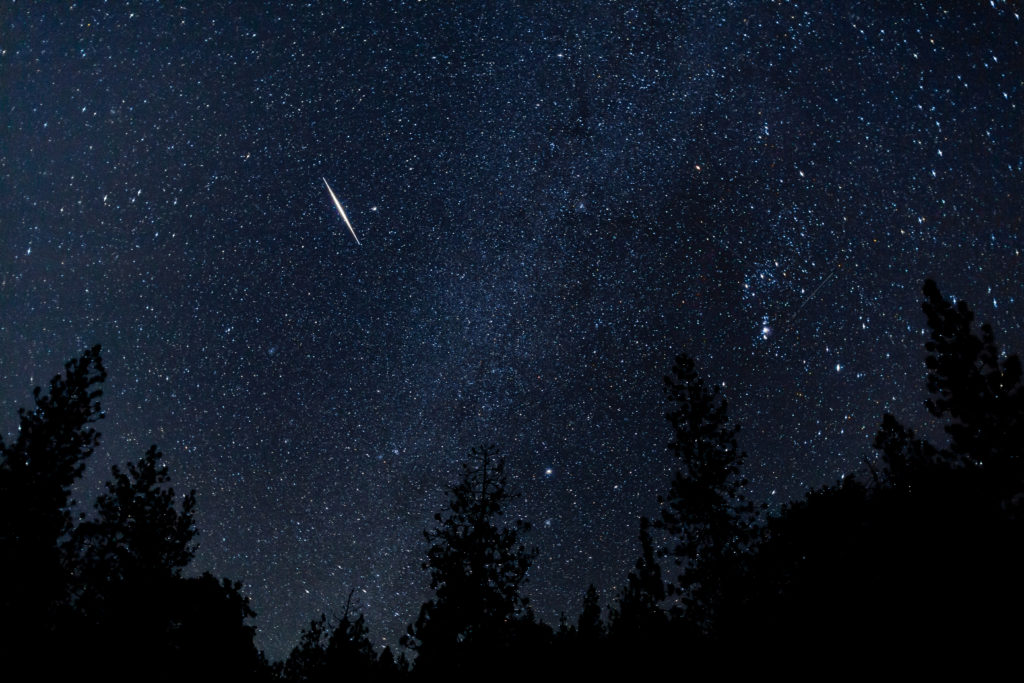A Celestial Spectacle Awaits in the UAE Night Sky
Stargazers across the UAE are in for a treat: the Orionids meteor shower is poised to deliver a breathtaking display of shooting stars. As Earth passes through a stream of debris from Halley’s Comet, luminous streaks will blaze across the darkness. This year, conditions look favorable for many to catch the show.
Why the Orionids Are Special
Unlike many meteor showers, the Orionids are known for their speed and brilliance. The tiny dust and rock particles left behind by Halley’s Comet slam into our atmosphere at tremendous speed, creating bright trails and sometimes lingering glowing trains across the sky.
What makes this year’s event even more compelling is the timing: the peak night coincides with a moonless or near-dark sky, meaning the meteors won’t have to compete with moonlight. This gives observers a golden opportunity for clearer, more vivid viewing.

When and Where to Look
The Orionids are active over several weeks, but their peak is expected on the night between October 20 and 21. During that window, many experts estimate up to ~20 meteors per hour may be visible under dark skies.
Choose a location away from city lights — deserts, beaches, or open elevated areas will work best. After sunset, allow your eyes 20 to 30 minutes to adjust to the darkness. Though the constellation Orion is the “radiant” point, meteors may appear across the sky, so scan broadly, not just toward Orion.


Best Viewing Tips for UAE Skywatchers
• Dress warmly (or comfortably) and bring a reclining chair or a blanket — watching meteors takes patience.
• Lay back and look upward; avoid focussing on a single point.
• Use your peripheral vision — many meteors are brighter off center.
• Avoid using binoculars or telescopes for the meteors themselves; they’re too fast and move across large swaths of sky.
• Pair your meteor viewing with stargazing — you may glimpse constellations, satellites, or planets too.
Events & Community Gatherings
In alignment with this spectacle, local astronomy groups are hosting stargazing events. For example, the Dubai Astronomy Group will stage a desert observation event at Al Qudra, complete with telescope sessions, guided sky tours, and expert talks. It’s a great chance to join fellow enthusiasts and deepen your experience.
The Science Behind the Show
The Orionids originate from debris shed by Halley’s Comet, which last visited Earth in 1986 and is expected to return in 2061. Each autumn, Earth crosses the comet’s path, and the particles burn up in our upper atmosphere to create the meteor display.
Because these meteors travel at around 66 km per second, they show up as swift, bright streaks. In exceptional years, the Orionids have produced far more meteors than average — though this year is expected to be solidly in the “good but not extreme” range.
What Makes 2025 a Great Year
A few factors are aligning to enhance the viewing experience this year:
• A new or very slim-crescent moon means darkness will not be overwhelmed by moonlight.
• The peak night falls at a time when the radiant (Orion area) climbs high enough in the sky late night to early morning.
• The UAE’s desert and remote areas provide excellent dark sky habitats — if you can get away from urban light pollution.

How Many Meteors Can You Expect?
Under ideal dark sky conditions, you may see 10–20 meteors per hour during the peak. Some years, observers have reported bursts of 50–70 meteors per hour, but those are rarer. In the UAE, 20 per hour is a realistic expectation if conditions cooperate.
How to Photograph the Orionids
If you’re keen to capture the show on camera:
• Use a wide-angle lens with a large aperture.
• Mount your camera on a tripod for stability.
• Use long exposures (e.g. 20 to 30 seconds) with high ISO, but avoid overexposure.
• Keep shooting successively — meteors are unpredictable.
• Point your camera toward darker parts of the sky (not toward bright urban lights).
• Experiment with framing — include silhouettes or landscapes to add context.
Why You Should Watch
There’s something deeply human about pausing beneath the night sky and watching cosmic light sweep overhead. The Orionids remind us of our place in the universe, of millennia of celestial cycles, and the unseen debris that trails comets across space. Whether you’re a seasoned astronomer or simply curious, this is your chance to connect with something far greater than ourselves.
Do follow UAE Stories on Instagram
Read Next – UBS Opens Advisory Office in Abu Dhabi’s ADGM as Wealthy Flock to UAE















